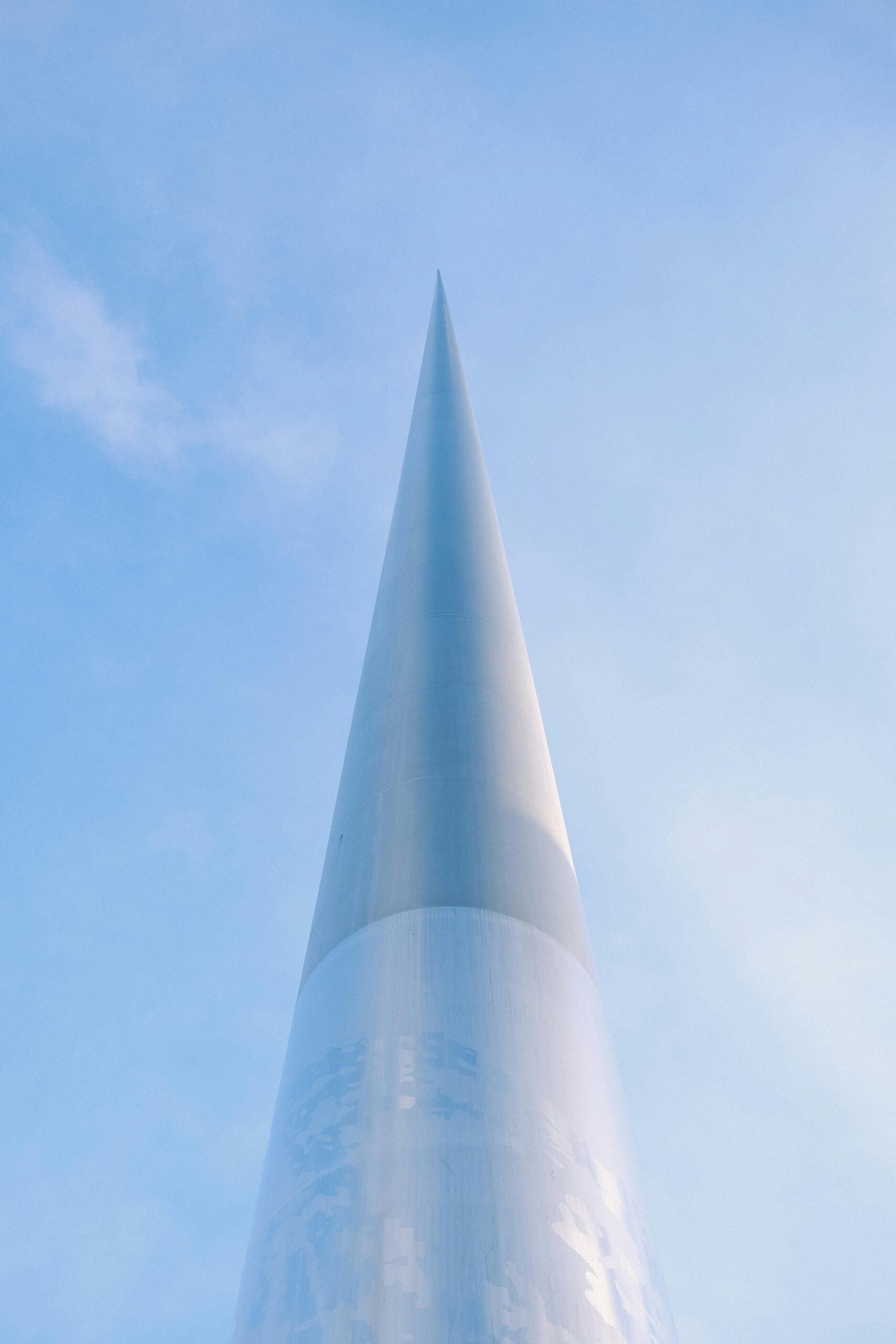Dublin Spire Secrets: Discover The Iconic Landmark’s Hidden Stories is your ultimate guide to uncovering the fascinating tales behind one of Ireland’s most recognisable monuments. Often admired for its sleek, towering design, the Dublin Spire holds more than just architectural significance—it’s brimming with mysterious histories and lesser-known facts that will surprise even the most seasoned locals. Ever wondered what secrets lie beneath this glittering needle in the heart of Dublin? You’re about to find out!
Standing proudly on O’Connell Street, the Dublin Spire landmark is not just a simple monument but a symbol of modern Irish identity and urban transformation. Despite its striking appearance, many passersby are unaware of the intriguing controversies surrounding its construction, or the symbolic meanings it carries. Did you know the Spire was built to replace the infamous Nelson’s Pillar, which was destroyed decades earlier? This story alone is packed with dramatic twists and cultural significance that make the Spire so much more than meets the eye.
In this article, we dive deep into the hidden stories of the Dublin Spire, exploring everything from its controversial beginnings to the quirky urban legends that locals love to share. Whether you’re planning a visit or simply curious about Dublin’s rich history, these essential facts about the Dublin Spire will add a new layer of appreciation to your experience. Ready to uncover the secrets behind this iconic structure? Let’s embark on a captivating journey through time, design, and mystery!
Unveiling Dublin Spire Secrets: 7 Fascinating Facts You Never Knew
Dublin’s skyline is instantly recognisable thanks to one tall, gleaming monument that pierces the sky like a silver needle. The Dublin Spire, standing proudly in the heart of the city, is more than just a landmark — it holds a treasure trove of secrets and stories that many people never heard about. If you think you know everything about this iconic structure, think again. Here, we unveil 7 fascinating facts about the Dublin Spire that might surprise even the most seasoned Dubliners and visitors.
What’s the Dublin Spire, Anyway?
Before we dive in, a quick reminder: the Dublin Spire, also called the Monument of Light, is a tall, stainless steel sculpture that rises about 120 metres (393 feet) above O’Connell Street. Completed in 2003, it replaced Nelson’s Pillar, which was destroyed in 1966. It’s a modern symbol of Dublin, but it also carries a mix of history, art, and curiosity that often goes unnoticed.
1. The Spire’s Shape Was Inspired by a Needle
The spire is often called the “Stiletto in the Sky” because its shape resembles a gigantic needle or spike. The designer, Ian Ritchie, was inspired by the idea of a “needle-like monument” that points to the heavens, symbolising light and hope. Its sleek and tapering form makes it unique among city landmarks, standing out against the older, more traditional architecture.
2. It Took Years to Construct and Faced Delays
Though the spire looks simple, it wasn’t built overnight. Construction started in June 2002 but wasn’t completed until January 2003. Delays happened because of technical challenges, like assembling the sections safely and securely. In fact, the spire is made up of 8 separate steel cones, stacked to create that smooth tapering effect, and each piece weighed several tonnes.
3. The Spire Changes Colour at Night — Sort Of
Many people think the spire glows or changes colours, but the truth is a bit different. The stainless steel surface reflects sunlight and city lights, and at night, the lighting around the spire makes it seem to shimmer or subtly change tone. There isn’t actually any coloured lighting installed on the spire itself, just nearby street lights and reflections playing tricks on the eye.
4. It’s Not Just a Monument — It’s a Compass for the City
One cool fact that often gets missed is the spire’s orientation. It’s aligned almost perfectly north-south, making it a kind of giant compass needle in the middle of Dublin. Locals sometimes use it as a point of reference, especially when navigating O’Connell Street or meeting up with friends. It’s a simple yet practical function for a piece of public art.
5. Controversy Followed the Spire From the Start
Not everyone was happy with the spire when it was first unveiled. Many Dubliners criticised its modern design, some even called it a “giant needle” or “metal spike” that didn’t fit the city’s character. Others missed Nelson’s Pillar, which the spire replaced. The debates about its aesthetics and meaning lasted years, but eventually, it became accepted as an essential part of Dublin’s identity.
6. The Spire Is Taller Than the Statue of Liberty’s Torch
To give you an idea of its impressive height, the Dublin Spire is taller than the Statue of Liberty’s torch in New York! Here’s a quick comparison:
| Item | Height (metres) | Height (feet) |
|---|---|---|
| Dublin Spire | 120 | 393 |
| Statue of Liberty’s Torch | 93 | 305 |
This makes the spire not only a giant in Dublin but also a giant in the world of famous monuments. A surprising fact for New Yorkers who might visit Dublin one day!
7. The Spire’s Base Holds a Secret Time Capsule
Beneath the smooth surface of the spire’s base, there’s a little-known secret: a time capsule was buried during its construction. This capsule contains messages, newspapers, and artefacts from the early 2000s, meant to be opened by future generations. It’s a hidden connection between today’s Dublin and the city’s future citizens, a reminder that monuments aren’t just about looks but also about preserving history.
Quick Facts Recap
- Height: 120 metres / 393 feet
- Material: Stainless steel
- Designer: Ian Ritchie Architects
- Completed: 2003
- Location: O’Connell Street, Dublin
- Number of steel cones: 8
- Time capsule buried at base: Yes
Why the Dublin Spire Still Matters Today
Despite early criticisms, the spire has become a symbol of Dublin’s modernity
How the Dublin Spire Became Ireland’s Most Iconic Landmark: A Hidden History
How the Dublin Spire Became Ireland’s Most Iconic Landmark: A Hidden History
Standing tall in the heart of Dublin, the Dublin Spire is one of the city’s most recognisable structures. But few people really know the story behind this gleaming monument, or why it become such an important symbol for Ireland. In this article, we’ll explore the lesser-known stories surrounding the Spire, diving into its history, secrets and what make it so special to Dubliners and visitors alike.
The Birth of the Dublin Spire: A Symbol for a New Millennium
The Dublin Spire, also called the Monument of Light, was completed in 2003. It was built to replace the Nelson’s Pillar, which was destroyed by a bomb in 1966. The idea was to create something modern, simple but powerful, that would reflect Ireland’s new era as a progressive country entering the 21st century.
- Height: 120 metres (about 394 feet)
- Material: Stainless steel
- Location: O’Connell Street, Dublin’s main thoroughfare
It wasn’t easy to convince people about the Spire at first. Many Dubliners had fond memories of the old Nelson’s Pillar and were reluctant to accept a shiny metal needle in its place. But over time, the monument grew on everyone, becoming a beloved landmark.
What Makes the Spire So Unique?
Unlike traditional statues or monuments, the Dublin Spire is minimalist. It’s just a slender, conical shape tapering to a sharp point, reflecting the sky above. The design was created by Ian Ritchie Architects, a London-based firm, chosen through an international competition.
There are several interesting features that many people don’t notice immediately:
- The Spire’s surface is highly polished, reflecting sunlight by day and city lights by night.
- It appears to change colours slightly depending on the weather and time of day.
- The base of the Spire is hollow, and the structure is hollow inside, with an internal stairway though it is not open to public.
- It was designed to withstand winds up to 150 kilometres per hour, important for Dublin’s often stormy weather.
Dublin Spire Secrets: Discover The Iconic Landmark’s Hidden Stories
Beneath its sleek exterior, the Spire has a few hidden tales and mysteries. One of the most talked-about is the various nicknames Dubliners gave it shortly after construction:
- “The Stiletto in the Ghetto” – a cheeky nod to its sharp shape and location in a working-class area.
- “The Nail in the Pale” – referencing both its shape and Ireland’s nickname, “The Pale.”
- “The Spike” – the simplest and most common.
These nicknames reveal how locals embraced the monument with humour, even if they were unsure at first. The Spire also sparked debate about public art in Ireland – whether modern designs should replace traditional ones.
Timeline: Key Moments in Dublin Spire History
| Year | Event |
|---|---|
| 1998 | Dublin City Council announces competition for new monument |
| 2001 | Ian Ritchie Architects win design competition |
| 2002 | Construction begins on O’Connell Street |
| 2003 | Spire officially unveiled to the public |
| 2006 | Minor repairs made after corrosion found |
| 2010 | Lighting system upgraded to LED |
| 2018 | Spire featured in Dublin’s 100 Years of Independence celebrations |
How the Spire Compares to Other Famous Landmarks in Ireland
Though Dublin Spire is modern, Ireland has many historic monuments that attract tourists. Here’s a quick comparison:
| Landmark | Built | Height | Style | Location |
|---|---|---|---|---|
| Dublin Spire | 2003 | 120m | Modern, minimalist | Dublin |
| Rock of Cashel | 12th century | Variable | Medieval castle | County Tipperary |
| Cliffs of Moher | Natural | 214m | Natural landmark | County Clare |
| Giants Causeway | Natural | N/A | Geological formation | County Antrim |
The Spire stands out because it’s purely man-made and contemporary, unlike the ancient castles or natural wonders. It represents Dublin’s urban identity today.
Practical Tips for Visiting the Dublin Spire
If you’re planning a visit to Dublin, the Spire is a must-see. Here’s a few tips:
- Best time to visit: early morning or late evening for beautiful light reflections.
- Nearby attractions: O’Connell Street shopping, General Post Office, and the Abbey Theatre.
- Photography: Try different angles to capture how the Spire interacts with sky and cityscape.
- Accessibility: The area around the Spire is pedestrian-friendly and close to public transport.
Despite its simplicity, the Spire often surprises visitors with its size and elegance up close.
Discover the Dublin Spire’s Engineering Marvels: Behind the Scenes of the City’s Tallest Structure
Dublin’s skyline has been forever changed by a slender, towering structure that rises high above the city streets. The Dublin Spire, often called the Monument of Light, stands as the tallest structure in the Irish capital. But few people really know the fascinating engineering marvels and hidden stories behind this iconic landmark. If you ever wondered what makes the spire so special, or what secrets it holds, then this article is for you.
The Rise of the Dublin Spire: A Brief History
The idea for a monument to replace the Nelson’s Pillar, which was destroyed by a bomb in 1966, had been discussed for decades. In the late 1990s, Dublin City Council finally decided to erect a new landmark that would symbolise the city’s modernity and future ambitions. The design competition attracted many architects, but it was the minimalist and elegant design by Ian Ritchie Architects that won.
Construction started in 2002 and took about two years to complete. The Spire was officially unveiled in January 2003. Standing at 120 metres (approximately 393 feet), it is not just a visual spectacle but also a feat of engineering.
Engineering Marvels: What Makes the Spire Stand Tall?
At first glance, the Dublin Spire looks like a simple, needle-like structure made of shiny steel. But beneath its sleek surface lies complex engineering that helped it withstand the Irish weather and the test of time.
- Material: The spire is constructed from stainless steel, chosen for its durability and resistance to corrosion, especially important given Dublin’s often wet and windy climate.
- Foundation: The base of the spire is buried deep underground to provide stability. Engineers had to dig down over 20 metres to anchor it properly.
- Tapering Design: Its shape tapers from a wide base to a sharp point, reducing wind resistance and distributing weight evenly.
- Lighting: Embedded within the spire are LED lights that illuminate it at night, allowing it to serve as a beacon visible from several kilometres away.
The combination of these features makes sure the spire doesn’t sway too much during strong winds, something that could have been a problem given its height.
Dublin Spire Secrets: Little-Known Facts and Stories
While many people admire the Spire’s shiny surface and impressive height, there are some secrets and interesting facts that you might not heard before:
- The spire’s nickname, “The Stiletto in the Ghetto,” came from locals who joked about its needle-like shape and its location in an area that was once less affluent.
- Originally, the spire was planned to be 130 metres tall, but engineering constraints reduced it to 120 metres.
- The stainless steel surface is so polished that it reflects the sky and cityscape, making it almost blend in or stand out depending on the weather.
- Some say the spire has become a modern-day compass for Dubliners, as its tip points north almost perfectly.
- The monument was controversial when first proposed, with some critics calling it “a giant pin” or “a waste of money,” but today it is widely accepted as a city icon.
Comparing the Dublin Spire to Other Tall Structures
To put the Dublin Spire in perspective, here is a quick comparison table with other well-known tall structures in Ireland and beyond:
| Structure | Height (metres) | Location | Purpose |
|---|---|---|---|
| Dublin Spire | 120 | O’Connell Street, Dublin | Monument / Landmark |
| Nelson’s Pillar (destroyed) | 41 | Dublin | Commemorative Pillar |
| Spire of Lloyd | 43 | Kells, County Meath | Monument |
| Eiffel Tower | 324 | Paris, France | Observation Tower |
| Big Ben (Elizabeth Tower) | 96 | London, UK | Clock Tower |
As you can see, the Dublin Spire is significantly taller than previous monuments in Ireland but is modest compared to global landmarks.
Practical Tips for Visitors: How to Experience the Spire
If you’re in New York but planning a trip to Dublin or just curious about the spire, here are a few ways to experience this structure up close — even if you can’t climb it (which is not allowed):
- Visit O’Connell Street: The spire is right in the heart of Dublin’s main thoroughfare. It’s easy to spot and photograph from many angles.
- Time your visit for sunset or night: The LED lights create a stunning glow after dark, transforming the spire into a luminous spectacle.
- Combine your visit with nearby attractions: The General Post Office (GPO) is just steps away, offering rich Irish history.
- Use it as a navigation point: Dubliners often use the spire to orient themselves
Why Locals Love the Dublin Spire: Untold Stories and Cultural Significance
Why Locals Love the Dublin Spire: Untold Stories and Cultural Significance
When you think of Dublin, a few landmarks might come to your mind like Trinity College or the Guinness Storehouse. But one structure that often gets overlooked by tourists, yet cherished by locals, is the Dublin Spire. Standing tall in the heart of the city, this striking monument has stories and meanings that many people outside Ireland might not even know about. It’s not just a shiny metal tower; it’s a symbol that captures the spirit of Dublin in ways you wouldn’t expect.
The Birth of the Dublin Spire: A Quick History
The Dublin Spire, also known as the Monument of Light, was completed in 2003. Its creation was part of a plan to rejuvenate O’Connell Street, which had been through a lot of changes and challenges over the years. The city needed something bold, something modern that could replace Nelson’s Pillar, which was destroyed in 1966.
- Height: 120 meters (393 feet)
- Material: Stainless steel
- Designer: Ian Ritchie Architects
- Location: O’Connell Street, Dublin
This spire was intended to be a beacon of hope and progress, reaching towards the sky, shining brightly in the sunlight. But if you asks locals, they’ll tell you it’s much more than just a tall needle in the city skyline.
Why the Dublin Spire Matters to Locals
Despite its modern look, many Dubliners feel a deep connection to the spire. Some say it represents resilience, the city’s ability to rise up from its troubled past. Others appreciate how it blends old with new, a reminder that Dublin is a city that keeps evolving but never forgets its roots.
Here’s what makes the spire special for locals:
- Identity Marker: It’s become a meeting point, a place where Dubliners say “meet me under the spire” rather than using old-fashioned landmarks.
- Cultural Symbol: The spire’s sharp, elegant design contrasts with the historic architecture but fits perfectly with Dublin’s creative vibe.
- Tourist Attraction: While tourists flock to other sites, locals enjoy watching visitors’ reactions when they first see the spire piercing the sky.
- Community Stories: Many stories have grown around it — from urban legends to personal memories of protests, celebrations, and everyday life.
Dublin Spire Secrets: Discover The Iconic Landmark’s Hidden Stories
There are some lesser-known facts and myths about the spire that rarely get told in guidebooks. For example, did you know that the spire’s tip is designed to appear like a flame? It’s supposed to symbolise light and guidance, something very meaningful for a city known for its literary and revolutionary history.
Another secret involves the way the spire interacts with the sun. Because of its stainless steel surface, it reflects sunlight in a way that changes throughout the day, creating different visual effects. Some locals say it looks like the spire is alive, changing colour and mood with the weather.
Comparing the Dublin Spire to Other European Landmarks
To get a better sense of why the spire is unique, it’s interesting to compare it with other European monuments:
| Landmark | Height (meters) | Year Completed | Material | Cultural Significance |
|---|---|---|---|---|
| Eiffel Tower (Paris) | 324 | 1889 | Iron | Symbol of French innovation & romance |
| Atomium (Brussels) | 102 | 1958 | Steel & Aluminium | Represents scientific progress & unity |
| Dublin Spire | 120 | 2003 | Stainless Steel | Symbol of rebirth and modern identity |
Unlike older landmarks that might be centuries old, the Dublin Spire is very much a product of the 21st century, showing how Dublin sees itself in the modern world.
Practical Reasons Why the Spire is Loved
Apart from symbolism, the Dublin Spire serves practical roles that people might not think about:
- Navigation Aid: It’s visible from many points across the city, helping locals and visitors find their way.
- Event Marker: During festivals or citywide events, it acts as a central point for gatherings.
- Photography Hotspot: Both amateur and professional photographers love capturing the spire from different angles, especially at sunset.
- Public Space Enhancement: The area around the spire has been pedestrianised and improved, making O’Connell Street more pleasant for walkers and shoppers.
Untold Stories from Locals
Everyday Dubliners have interesting stories related to the spire. Some remember the initial controversy: not everyone liked the design when it first went up, some even called it a “giant needle” or “traffic cone.” However, over time, people warmed to
Exploring Dublin Spire at Night: Captivating Views and Lesser-Known Attractions Nearby
Exploring Dublin Spire at Night: Captivating Views and Lesser-Known Attractions Nearby, Dublin Spire Secrets: Discover The Iconic Landmark’s Hidden Stories
Dublin Spire, often called the “Monument of Light,” stands tall in the heart of Dublin city. By day, it’s a striking sight, but by night, it transforms into something truly magical. Many visitors rush past it during daylight hours, but exploring Dublin Spire at night offers a whole different experience, filled with captivating views and some hidden gems close by that locals cherish. This article will take you through the wonders of Dublin Spire after sunset, sharing some quirky facts and nearby attractions you might not know about.
Dublin Spire: A Brief History and Its Iconic Status
Dublin Spire was erected in 2003, standing at 120 meters tall, making it one of the tallest structures in Ireland. It replaces the Nelson’s Pillar which was destroyed in 1966. The spire was designed by Ian Ritchie Architects and made of stainless steel, reflecting light in a way that makes it look like it’s glowing, especially when illuminated at night. It’s said to symbolize Dublin’s regeneration and modern spirit.
Some interesting facts about Dublin Spire:
- It weighs around 175 tonnes.
- The base is just 3 metres wide, tapering to just 15 cm at the top.
- The needle can be seen from several miles away on clear days.
- Its design sparked debates about modern art in the city centre.
Despite some initial controversies, the spire has now become a beloved Dublin landmark and a focal point for visitors.
Why Visit Dublin Spire at Night?
During the day, the spire is impressive, but the real charm reveals itself after nightfall. The surrounding area is less crowded, creating a peaceful setting. The lighting installations on the spire softly change colours, casting a subtle glow over O’Connell Street, Dublin’s main thoroughfare.
Here’s why the spire at night is worth a visit:
- Captivating Illumination: The light show isn’t overly flashy but elegant; it’s perfect for photographers trying to capture the city’s nightlife.
- Cooler Temperatures: Especially in summer, the night air is more comfortable for walking around.
- Quieter Atmosphere: Less hustle and bustle than daytime, making it easier to appreciate the structure and surroundings.
- Improved Views: The spire’s height allows for stunning views of the city skyline lit up, especially when you climb nearby vantage points.
Lesser-Known Attractions Close to Dublin Spire
Many tourists overlook the smaller, intriguing spots near the spire. If you’re in the area at night, you might want to check out these hidden gems:
- The Garden of Remembrance: A peaceful park dedicated to those who fought for Irish freedom. At night it’s tranquil and beautifully lit.
- The Abbey Theatre: Ireland’s national theatre, just a short walk away. Evening performances here are a great way to soak in Irish culture.
- The Light House Cinema: For a relaxed night, catch an indie or foreign film in this cosy venue nearby.
- Henry Street: Dublin’s bustling shopping street, which has a different vibe at night with its illuminated storefronts and street performers.
- The Little Museum of Dublin: Though it closes in early evening, it’s worth a daytime visit; it tells the story of Dublin’s people and history.
Dublin Spire Secrets: Hidden Stories You Might Not Know
Most people see the spire as a modern art piece, but there’s more beneath the surface. Here’s some lesser-known tidbits:
- Construction Challenges: Building such a slender structure wasn’t easy. Engineers had to make sure it could withstand strong winds and Dublin’s often damp weather.
- Symbolic Height: Some say the 120-metre height was chosen to represent Ireland’s 32 counties multiplied by a significant factor — though this is more folklore than fact.
- Lighting Technology: The spire uses LED lights that can change colour based on events or seasons, but these are controlled remotely from a central hub in Dublin City Council.
- Local Nicknames: Dubliners sometimes call it “The Stiletto in the Ghetto” or “The Nail,” showing how the spire has woven itself into local humour and culture.
- Temporary Art Installations: Occasionally, artists use the spire for projection art, turning it into a massive canvas during festivals.
Practical Tips for Visiting Dublin Spire at Night
If you’re planning a visit, here’s some practical advice to make most of your outing:
- Best Viewing Spots:
- O’Connell Street itself, for close-up views.
- The rooftop bars near Henry Street.
- Parnell Square Park, a short walk away, offers a panoramic perspective.
- **
Conclusion
In summary, the Dublin Spire stands as a striking modern landmark that beautifully contrasts with the city’s rich historical tapestry. Rising 120 metres above O’Connell Street, this stainless steel monument not only serves as a navigational beacon but also symbolises Dublin’s forward-looking spirit and artistic innovation. Its sleek design and reflective surface invite both locals and visitors to engage with the city in a unique way, blending contemporary architecture with cultural identity. Whether admired during the day or illuminated at night, the Spire continues to capture the imagination and hearts of all who pass by. For anyone exploring Dublin, a visit to this iconic structure is essential—not just to witness its impressive scale, but to appreciate the story it tells about Ireland’s capital. Next time you find yourself in Dublin, make sure to experience the Spire firsthand and discover why it has become an emblem of the city’s dynamic character.






